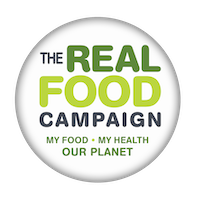Monocultures, intensive & factory farming
Summary
Put simply, Mother Nature hates monoculture.
Think of vast fields of wheat, barley, rape seed or soya crops, or plantations of a single species of fruit tree, or furrowed fields planted with a single vegetable crop. This is monoculture.
Think of thousands of livestock and poultry – cattle, sheep, pigs, chickens, turkeys – raised on large-scale, intensive farms, often in close confinement and fed an unnatural diet of growth-promoting grains and soya-based proteins. This is monoculture.
Monoculture – also known as monocropping – is a modern commercial agriculture and farming practice, the aim of which is to increase yield (and profits) by cultivating a single species or type of plant or raising a single breed of animal. The theory is that the farmer provides only for the needs of a single species, with its own individual characteristics, in order to grow a successful crop.
The promise is that the economy of scale allowed by cultivating a single crop (for example, the use of a single automated harvesting method) will boost profits for the farmer.
Monoculture has meant that of the huge number of species of plants and animals available for human consumption, we now use only the few that are most profitable.
According to the UN’s Food and Agriculture Organisation, 75% of our total food supply comes from a mere 12 plant species and over 90% of livestock production comes from only 15 mammal and bird species.
Monocultures have significant negative impacts on the ecological systems of the Earth and are an environmental disaster. Healthy crops and livestock depend on hundreds of thousands of other species, including insects and birds that pollinate crops and feed on pests, and numerous microbial species that live on and in plants and animals which are especially critical to their survival.
Mother Nature created and loves diversity, but the lack of diversity in the monoculture system eliminates evolutionary controls, leaving:
- an insufficient range of insect species in a specific location to ensure that a single population does not get too large
- destruction of plant-based topsoil nutrients like legumes and clover
- fewer species of microbes, bacteria and fungi
- less soil integrity with fewer plants of different root depths.
Pathogens spread more readily, with less resistance and with a more severe impact, when the host plants (or animals) are more genetically uniform and crowded.
Outbreaks of disease, invasions of insects and climatic anomalies cause crop and animal failures. This is a big problem.7
